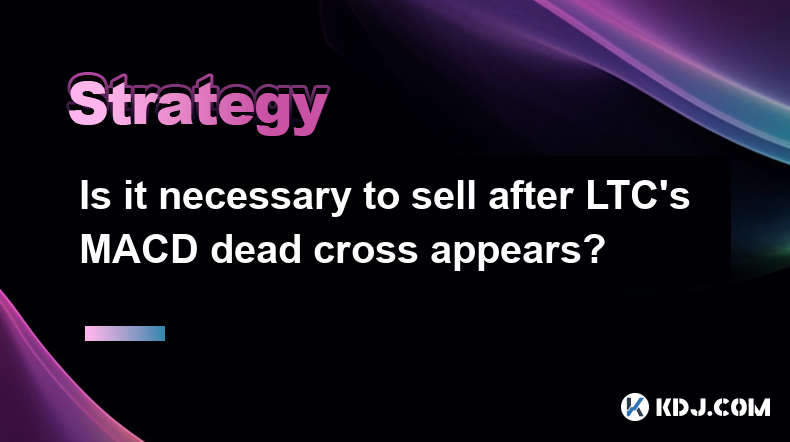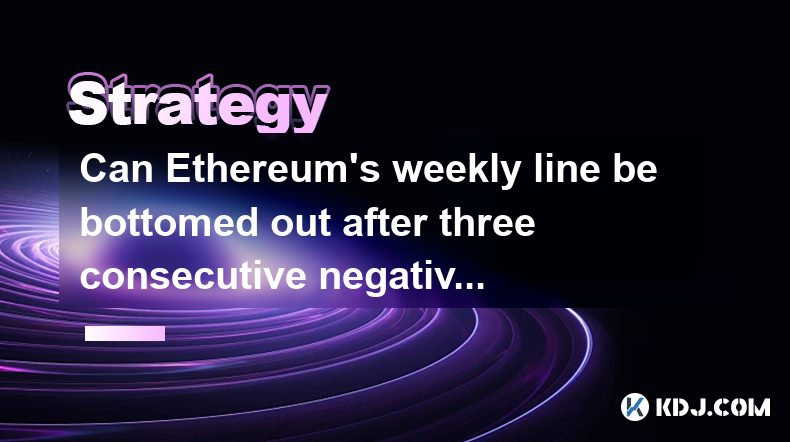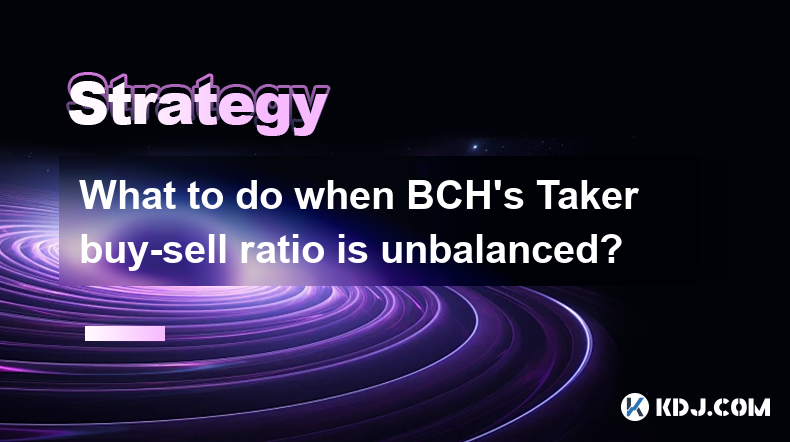-
 Bitcoin
Bitcoin $92,628.6145
-0.48% -
 Ethereum
Ethereum $1,768.4886
-1.00% -
 Tether USDt
Tether USDt $1.0001
-0.02% -
 XRP
XRP $2.1788
-2.09% -
 BNB
BNB $604.6400
-1.64% -
 Solana
Solana $148.1224
-0.74% -
 USDC
USDC $0.9999
0.00% -
 Dogecoin
Dogecoin $0.1726
-5.06% -
 Cardano
Cardano $0.6822
-1.37% -
 TRON
TRON $0.2433
-1.69% -
 Sui
Sui $2.9740
6.38% -
 Chainlink
Chainlink $14.4891
0.72% -
 Avalanche
Avalanche $21.9210
-2.25% -
 UNUS SED LEO
UNUS SED LEO $9.1740
1.21% -
 Stellar
Stellar $0.2616
-2.03% -
 Toncoin
Toncoin $3.1132
-0.55% -
 Shiba Inu
Shiba Inu $0.0...01317
-4.27% -
 Hedera
Hedera $0.1771
-2.49% -
 Bitcoin Cash
Bitcoin Cash $363.3000
1.82% -
 Polkadot
Polkadot $3.9802
-2.53% -
 Litecoin
Litecoin $82.0667
-2.95% -
 Hyperliquid
Hyperliquid $18.0694
-5.17% -
 Dai
Dai $1.0000
0.01% -
 Bitget Token
Bitget Token $4.4799
-3.52% -
 Ethena USDe
Ethena USDe $0.9994
-0.02% -
 Pi
Pi $0.6501
-0.27% -
 Monero
Monero $226.5326
0.45% -
 Uniswap
Uniswap $5.8488
-1.49% -
 Pepe
Pepe $0.0...08497
-7.17% -
 Aptos
Aptos $5.2845
0.26%
Is it necessary to sell after LTC's MACD dead cross appears?
A MACD dead cross on Litecoin signals potential bearish trends, but selling isn't automatic; consider volume, other indicators, and market sentiment before deciding.
Apr 23, 2025 at 04:07 pm

The MACD (Moving Average Convergence Divergence) is a popular technical analysis tool used by traders to identify potential buy and sell signals in the market. When it comes to Litecoin (LTC), understanding the implications of a MACD dead cross is crucial for making informed trading decisions. A MACD dead cross occurs when the MACD line crosses below the signal line, which is often interpreted as a bearish signal. However, the necessity of selling LTC after a MACD dead cross appears is not a straightforward decision and depends on various factors.
Understanding MACD and Dead Cross
The MACD indicator is composed of two lines: the MACD line and the signal line. The MACD line is calculated by subtracting the 26-period Exponential Moving Average (EMA) from the 12-period EMA. The signal line is a 9-period EMA of the MACD line. A dead cross, or bearish crossover, happens when the MACD line moves below the signal line, suggesting that the short-term momentum is weakening relative to the long-term momentum.
While a MACD dead cross can be an indicator of potential downward price movement, it is not a definitive signal to sell. Traders should consider other technical indicators, market conditions, and fundamental analysis before making a decision.
Factors to Consider Before Selling
When a MACD dead cross appears on the Litecoin chart, several factors should be taken into account before deciding to sell:
- Volume: High trading volume accompanying the dead cross can reinforce the bearish signal, suggesting that the downward momentum is strong. Conversely, low volume may indicate that the signal is less reliable.
- Other Technical Indicators: Confirming the dead cross with other indicators such as the Relative Strength Index (RSI) or Bollinger Bands can provide a more comprehensive view of the market. For instance, if the RSI is also showing overbought conditions, it might strengthen the case for selling.
- Market Sentiment: The overall sentiment in the cryptocurrency market can influence the decision to sell. If there are negative news or events affecting the crypto market, it might be wise to consider selling.
- Fundamental Analysis: Evaluating Litecoin's fundamentals, such as its development progress, adoption rates, and network health, can provide additional context for the decision.
Using Additional Tools for Confirmation
To make a more informed decision, traders can use additional tools to confirm the MACD dead cross signal:
- Trend Lines: Drawing trend lines on the Litecoin chart can help identify the overall trend. If the dead cross occurs near a resistance level or during a downtrend, it might be a stronger sell signal.
- Candlestick Patterns: Analyzing candlestick patterns around the dead cross can provide further insight. For example, a bearish engulfing pattern near the dead cross could reinforce the sell signal.
- Support and Resistance Levels: Identifying key support and resistance levels can help determine potential price targets if selling after a dead cross. If the price is approaching a significant support level, it might be prudent to wait before selling.
Practical Steps to Take After a MACD Dead Cross
If you decide to sell Litecoin after a MACD dead cross, here are the practical steps to follow:
- Monitor the Chart: Keep a close eye on the Litecoin chart to confirm the dead cross and observe any subsequent price movements.
- Set Stop-Loss Orders: To manage risk, consider setting a stop-loss order slightly above the current price to limit potential losses if the market moves against your position.
- Execute the Sale: Once you have confirmed the dead cross and considered all relevant factors, execute the sale through your trading platform. Ensure you are logged into your account and have sufficient funds or assets to complete the transaction.
- Review and Adjust: After selling, review your decision and adjust your strategy based on the outcome. If the price continues to fall, you may have made the right decision. If it rebounds, consider what you could have done differently.
Alternative Strategies to Selling
Instead of selling immediately after a MACD dead cross, traders can consider alternative strategies:
- Hold and Wait: If the fundamentals of Litecoin remain strong, you might choose to hold your position and wait for a potential recovery. This strategy requires a higher risk tolerance and a long-term perspective.
- Partial Selling: Selling a portion of your Litecoin holdings can help you lock in some profits while keeping the rest of your position open for potential future gains.
- Short Selling: If you believe the price will continue to decline, you might consider short selling Litecoin. This involves borrowing Litecoin to sell it at the current price and buying it back at a lower price to return to the lender, profiting from the difference.
Conclusion on the Necessity of Selling
The necessity of selling Litecoin after a MACD dead cross appears is not absolute. It depends on a thorough analysis of various factors, including volume, other technical indicators, market sentiment, and fundamental analysis. While a dead cross can be a bearish signal, it should not be the sole basis for a selling decision. Traders should use a combination of tools and strategies to make informed decisions that align with their risk tolerance and investment goals.
Frequently Asked Questions
Q1: Can a MACD dead cross be a false signal?
A1: Yes, a MACD dead cross can sometimes be a false signal. It is important to confirm the signal with other indicators and market conditions to avoid making premature selling decisions.
Q2: How often should I check the MACD indicator for Litecoin?
A2: The frequency of checking the MACD indicator depends on your trading style. Day traders might check it multiple times a day, while swing traders might check it daily or weekly. It's important to find a balance that suits your trading strategy.
Q3: What other indicators can I use alongside the MACD for Litecoin trading?
A3: Other indicators that can be used alongside the MACD for Litecoin trading include the Relative Strength Index (RSI), Bollinger Bands, and the Stochastic Oscillator. These can help confirm signals and provide a more comprehensive analysis of the market.
Q4: Is it possible to use the MACD for long-term Litecoin investment decisions?
A4: While the MACD is typically used for shorter-term trading, it can also be adapted for long-term investment decisions by adjusting the periods used in the calculation. However, long-term investors should also consider fundamental analysis and broader market trends.
Disclaimer:info@kdj.com
The information provided is not trading advice. kdj.com does not assume any responsibility for any investments made based on the information provided in this article. Cryptocurrencies are highly volatile and it is highly recommended that you invest with caution after thorough research!
If you believe that the content used on this website infringes your copyright, please contact us immediately (info@kdj.com) and we will delete it promptly.
- BetMGM Bonus Code CUSE150
- 2025-04-24 12:05:12
- Xrp (XRP) Price Prediction: As Momentum Builds, Technical Indicators Hint at Potential Upside
- 2025-04-24 12:05:12
- Alchemy Pay (ACH) price prediction: Technical analysis
- 2025-04-24 12:00:26
- As US-China Tensions Intensify, Investors Seek Refuge in Gold and Bitcoin
- 2025-04-24 12:00:26
- Mutuum Finance (MUTM) Stuns the Crypto World with Impressive Rally, Reaching New Highs
- 2025-04-24 11:55:12
- Memli Krasniqi's cryptocurrencies have increased in value
- 2025-04-24 11:55:12
Related knowledge

Is LTC's UTXO age distribution useful for judging buying and selling points?
Apr 23,2025 at 05:42pm
Is LTC's UTXO age distribution useful for judging buying and selling points? Understanding the UTXO (Unspent Transaction Output) age distribution of Litecoin (LTC) can provide valuable insights into the behavior of its holders and potentially help in making informed decisions about buying and selling points. The UTXO age distribution refers to the age o...

Can Ethereum's weekly line be bottomed out after three consecutive negatives?
Apr 24,2025 at 10:56am
In the dynamic world of cryptocurrencies, understanding market trends and patterns is crucial for investors and traders alike. One of the significant aspects of technical analysis in this field is the examination of weekly line charts, particularly for major cryptocurrencies like Ethereum. The question of whether Ethereum's weekly line can be bottomed o...

Where can I find the current average holding cost of XRP in the market?
Apr 22,2025 at 11:00pm
Where can I find the current average holding cost of XRP in the market? Finding the current average holding cost of XRP in the market can be a challenging task, as this information is not readily available on most mainstream cryptocurrency platforms. However, there are several methods and resources that you can use to estimate this figure. In this artic...

What should I do if LINK's NVT signal diverges?
Apr 24,2025 at 04:14am
When the NVT (Network Value to Transactions) signal for LINK (Chainlink) diverges, it can be a significant indicator for investors and traders to take action. The NVT ratio is a valuation metric used in the cryptocurrency space to assess whether a cryptocurrency is overvalued or undervalued based on its network activity. A divergence in the NVT signal s...

What to do when BCH's Taker buy-sell ratio is unbalanced?
Apr 24,2025 at 03:49am
When dealing with cryptocurrencies like Bitcoin Cash (BCH), understanding the dynamics of the market, particularly the taker buy-sell ratio, can be crucial for making informed trading decisions. The taker buy-sell ratio is a metric that reflects the balance between buying and selling pressure in the market. An unbalanced ratio can signal potential price...

Where is the short-term holding cost line of BCH?
Apr 23,2025 at 06:00am
The short-term holding cost line of Bitcoin Cash (BCH) is a crucial metric for traders and investors looking to understand the immediate market sentiment and potential price movements. This line represents the average cost at which BCH has been held for a short period, typically considered to be less than 30 days. By analyzing this metric, market partic...

Is LTC's UTXO age distribution useful for judging buying and selling points?
Apr 23,2025 at 05:42pm
Is LTC's UTXO age distribution useful for judging buying and selling points? Understanding the UTXO (Unspent Transaction Output) age distribution of Litecoin (LTC) can provide valuable insights into the behavior of its holders and potentially help in making informed decisions about buying and selling points. The UTXO age distribution refers to the age o...

Can Ethereum's weekly line be bottomed out after three consecutive negatives?
Apr 24,2025 at 10:56am
In the dynamic world of cryptocurrencies, understanding market trends and patterns is crucial for investors and traders alike. One of the significant aspects of technical analysis in this field is the examination of weekly line charts, particularly for major cryptocurrencies like Ethereum. The question of whether Ethereum's weekly line can be bottomed o...

Where can I find the current average holding cost of XRP in the market?
Apr 22,2025 at 11:00pm
Where can I find the current average holding cost of XRP in the market? Finding the current average holding cost of XRP in the market can be a challenging task, as this information is not readily available on most mainstream cryptocurrency platforms. However, there are several methods and resources that you can use to estimate this figure. In this artic...

What should I do if LINK's NVT signal diverges?
Apr 24,2025 at 04:14am
When the NVT (Network Value to Transactions) signal for LINK (Chainlink) diverges, it can be a significant indicator for investors and traders to take action. The NVT ratio is a valuation metric used in the cryptocurrency space to assess whether a cryptocurrency is overvalued or undervalued based on its network activity. A divergence in the NVT signal s...

What to do when BCH's Taker buy-sell ratio is unbalanced?
Apr 24,2025 at 03:49am
When dealing with cryptocurrencies like Bitcoin Cash (BCH), understanding the dynamics of the market, particularly the taker buy-sell ratio, can be crucial for making informed trading decisions. The taker buy-sell ratio is a metric that reflects the balance between buying and selling pressure in the market. An unbalanced ratio can signal potential price...

Where is the short-term holding cost line of BCH?
Apr 23,2025 at 06:00am
The short-term holding cost line of Bitcoin Cash (BCH) is a crucial metric for traders and investors looking to understand the immediate market sentiment and potential price movements. This line represents the average cost at which BCH has been held for a short period, typically considered to be less than 30 days. By analyzing this metric, market partic...
See all articles























































































